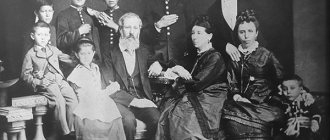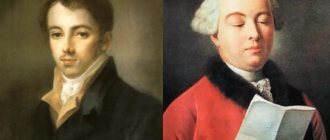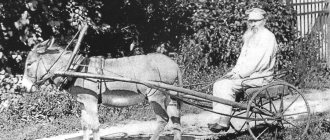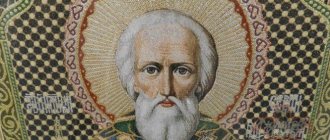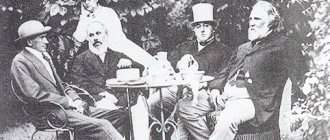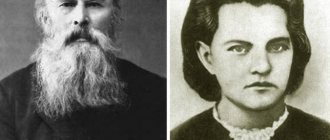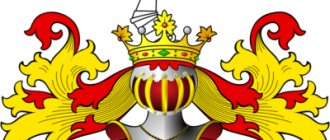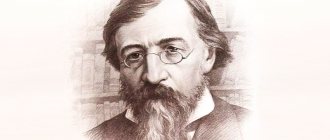early years
Peter the Great was born on May 30 (June 9), 1672 in Moscow. In the biography of Peter 1, it is important to note that he was the youngest son of Tsar Alexei Mikhailovich from his second marriage to Tsarina Natalya Kirillovna Naryshkina. From the age of one he was raised by nannies. And after the death of his father, at the age of four, his half-brother and new Tsar Fyodor Alekseevich became Peter’s guardian.
From the age of 5, little Peter began to be taught the alphabet. The clerk N. M. Zotov gave him lessons. However, the future king received a weak education and was not literate.
History of Peter 1
Six years later, Fedor 3 died, and his son Ivan was to ascend to the Russian throne. However, the legal heir turned out to be a very sick and weak child.
Taking advantage of this, the Naryshkin family, in fact, organized a coup d'etat. Having secured the support of Patriarch Joachim, the Naryshkins made young Peter king the very next day.
26-year-old Peter I. The portrait by Kneller was presented by Peter in 1698 to the English king
However, the Miloslavskys, relatives of Tsarevich Ivan, declared the illegality of such a transfer of power and the infringement of their own rights.
As a result, the famous Streletsky revolt took place in 1682, as a result of which two kings were on the throne at the same time - Ivan and Peter.
From that moment on, many significant events occurred in the biography of the young autocrat.
It is worth emphasizing here that from an early age the boy was interested in military affairs. On his orders, fortifications were built, and real military equipment was used in staged battles.
Peter 1 put uniforms on his peers and marched with them along the city streets. Interestingly, he himself acted as a drummer, walking in front of his regiment.
After the formation of his own artillery, the king created a small “fleet”. Even then he wanted to dominate the sea and lead his ships into battle.
Rise to power
In 1682, after the death of Fyodor Alekseevich, 10-year-old Peter and his brother Ivan were proclaimed kings. But in fact, their elder sister, Princess Sofya Alekseevna, took over the management. At this time, Peter and his mother were forced to move away from the yard and move to the village of Preobrazhenskoye. Here Peter 1 developed an interest in military activities; he created “amusing” regiments, which later became the basis of the Russian army. He is interested in firearms and shipbuilding. He spends a lot of time in the German settlement, becomes a fan of European life, and makes friends.
In 1689, Sophia was removed from the throne, and power passed to Peter I, and the management of the country was entrusted to his mother and uncle L.K. Naryshkin.
Tsar Peter 1
As a teenager, Peter 1 was not yet able to fully govern the state, so his half-sister Sofya Alekseevna, and then his mother Natalya Naryshkina, became his regent.
In 1689, Tsar Ivan officially transferred all power to his brother, as a result of which Peter 1 became the only full-fledged head of state.
After the death of his mother, his relatives, the Naryshkins, helped him manage the empire. However, the autocrat soon freed himself from their influence and began to independently rule the empire.
Rule of the Tsar
Peter continued the war with Crimea and took the fortress of Azov. Further actions of Peter I were aimed at creating a powerful fleet. Peter I's foreign policy at that time was focused on finding allies in the war with the Ottoman Empire. For this purpose, Peter went to Europe.
At this time, the activities of Peter I consisted only of creating political unions. He studies shipbuilding, structure, and culture of other countries. Returned to Russia after news of the Streltsy mutiny. As a result of the trip, he wanted to change Russia, for which several innovations were made. For example, chronology according to the Julian calendar was introduced.
To develop trade, access to the Baltic Sea was required. So the next stage of the reign of Peter I was the war with Sweden. Having made peace with Turkey, he captured the fortress of Noteburg and Nyenschanz. In May 1703, construction of St. Petersburg began. Next year, Narva and Dorpat were taken. In June 1709, Sweden was defeated in the Battle of Poltava. Soon after the death of Charles XII, peace was concluded between Russia and Sweden. New lands were annexed to Russia, and access to the Baltic Sea was gained.
Wars of Peter the Great
After a series of successful military campaigns, Peter 1 managed to open access to the Baltic Sea, which would later be called the “window to Europe.”
Meanwhile, the military power of the Russian Empire was constantly increasing, and the glory of Peter the Great spread throughout Europe. Soon the Eastern Baltic states were annexed to Russia.
In 1709, the famous Battle of Poltava took place, in which the Swedish and Russian armies fought. As a result, the Swedes were completely defeated, and the remnants of the troops were taken prisoner.
By the way, this battle was superbly described by Alexander Pushkin in the famous poem “Poltava”. Here's a snippet:
There was that troubled time, When young Russia, straining its strength in struggles, lived with the genius of Peter.
It is worth noting that Peter 1 himself took part in battles, showing courage and bravery in battle. By his example, he inspired the Russian army, which was ready to fight for the emperor to the last drop of blood.
Studying Peter's relationship with the soldiers, one cannot help but recall the famous story about a careless soldier. Read more about this here.
An interesting fact is that at the height of the Battle of Poltava, an enemy bullet shot through Peter I’s hat, passing just a few centimeters from his head. This once again proved the fact that the autocrat was not afraid to risk his life to defeat the enemy.
However, numerous military campaigns not only took the lives of valiant warriors, but also depleted the country's military resources. Things got to the point that the Russian Empire found itself in a situation where it was necessary to fight on 3 fronts simultaneously.
This forced Peter 1 to reconsider his views on foreign policy and make a number of important decisions.
He signed a peace agreement with the Turks, agreeing to give them back the fortress of Azov. By making such a sacrifice, he was able to save many human lives and military equipment.
After some time, Peter the Great began organizing campaigns to the east. Their result was the annexation of such cities as Omsk, Semipalatinsk and Kamchatka to Russia.
Interestingly, he even wanted to organize military expeditions to North America and India, but these plans were never destined to come true.
But Peter the Great was able to brilliantly carry out the Caspian campaign against Persia, conquering Baku, Derbent, Astrabad and many fortresses.
After his death, most of the conquered territories were lost, since their maintenance was not profitable for the state.
Reforming Russia
In October 1721, the title of emperor was adopted in the biography of Peter the Great.
Also during his reign, Kamchatka was annexed and the shores of the Caspian Sea were conquered.
Peter I carried out military reform several times. It mainly concerned the collection of money for the maintenance of the army and navy. It was carried out, in short, by force.
Further reforms of Peter I accelerated the technical and economic development of Russia. He carried out church reform, financial reform, transformations in industry, culture, and trade. In education, he also carried out a number of reforms aimed at mass education: he opened many schools for children and the first gymnasium in Russia (1705).
Personal life of Peter 1
In his youth, Peter 1 loved to be in the German settlement, enjoying foreign society. It was there that he first saw the German Anna Mons, with whom he immediately fell in love.
His mother was against his relationship with a German woman, so she insisted that he marry Evdokia Lopukhina. An interesting fact is that Peter did not contradict his mother and took Lopukhina as his wife.
Of course, in this forced marriage, their family life could not be called happy. They had two boys: Alexey and Alexander, the latter of whom died in early childhood.
Alexei was to become the legal heir to the throne after Peter 1. However, due to the fact that Evdokia tried to overthrow her husband from the throne and transfer power to her son, everything turned out completely differently.
Lopukhina was imprisoned in a monastery, and Alexei had to flee abroad. It is worth noting that Alexei himself never approved of his father’s reforms, and even called him a despot.
Peter I interrogates Tsarevich Alexei. Ge N. N., 1871
In 1717, Alexei was found and arrested, and then sentenced to death for participating in a conspiracy. However, he died in prison, and under very mysterious circumstances.
Having divorced his wife, in 1703 Peter the Great became interested in 19-year-old Katerina (nee Marta Samuilovna Skavronskaya). A whirlwind romance began between them, which lasted for many years.
Over time, they got married, but even before her marriage she gave birth to daughters Anna (1708) and Elizabeth (1709) from the emperor. Elizabeth later became empress (reigned 1741-1761)
Katerina was a very smart and insightful girl. She alone managed, with the help of affection and patience, to calm the king when he had acute attacks of headache.
Peter I with the sign of the Order of St. Andrew the First-Called on a blue St. Andrew's ribbon and a star on his chest. J.-M. Nattier, 1717
They officially got married only in 1712. After that, they had 9 more children, most of whom died at an early age.
Peter the Great truly loved Katerina. The Order of St. Catherine was established in her honor and the city of Yekaterinburg in the Urals was named. The Catherine Palace in Tsarskoye Selo (built under her daughter Elizaveta Petrovna) also bears the name of Catherine I.
Soon, another woman, Maria Cantemir, appeared in the biography of Peter 1, who remained the emperor’s favorite until the end of his life.
Death and legacy
Before his death, Peter I was very ill, but continued to rule the state. Peter the Great died on January 28 (February 8), 1725 from inflammation of the bladder. The throne passed to his wife, Empress Catherine I.
The strong personality of Peter I, who sought to change not only the state, but also the people, played a vital role in the history of Russia.
Cities were named after the Great Emperor after his death.
Monuments to Peter I were erected not only in Russia, but also in many European countries. One of the most famous is the Bronze Horseman in St. Petersburg.
Children about Peter the Great. Interesting facts about Peter 1 (the First)
Peter Alekseevich Romanov or simply Peter I is the first Russian Emperor and the last Tsar of the Romanov Dynasty. Peter was proclaimed Tsar at the age of 10, although he began to rule personally only a few years later. Peter 1 is a very interesting historical figure, so here we will look at some of the most interesting facts about Peter the Great (1).
1. Peter 1 was a very tall man (2 meters and 13 cm tall), but despite this he had a small foot size (38).
2. It was Peter 1 who came up with the idea of completely and tightly attaching blades to shoes to create skates for skating on ice. Before that, they were simply tied with belts, which was not very convenient.
3. Peter I really did not like drunkenness and tried in every possible way to eradicate it. One of his favorite methods was a special medal “For Drunkenness,” which weighed 7 kg and was made of cast iron. This medal was hung on the drunkard and secured so that he could not remove it. After that, the person walked with this “reward” for a whole week.
4. Peter was a very versatile person and he was well versed in many things, for example, he excelled in shipbuilding and navigation, also learned to make watches, in addition, he even mastered the craft of a mason, gardener, carpenter and took drawing lessons. He even tried to weave bast shoes, but he never mastered this science.
5. Many soldiers could not distinguish between right and left, no matter how much it was “drilled into them.” Then he ordered each soldier to tie a little hay to his left leg and a little straw to his right leg. After that, instead of left-right, it was customary to say hay-straw.
6. Among other things, Peter I was very interested in dentistry, in particular, he was very fond of pulling out bad teeth.
7. It was Peter the First who introduced the decree on celebrating the New Year from December 31 to January 1 (1700). The New Year was also celebrated in Europe.
8. Peter himself had excellent health, but all his children were sick very often. It was even rumored that the children were not his, but these were just rumors.
And finally, a few decrees from the great emperor, which some may find funny:
1. Don’t let navigators into taverns, because they, boorish bastards, quickly get drunk and cause trouble
2. “On shaving beards and mustaches for people of all ranks” dated January 16, 1705. “And if those who do not want to shave their mustaches and beards, but want to wander around with beards and mustaches, and from those, from courtiers and courtyard servants, and from policemen, and all kinds of servants, and clerks, 60 rubles per person, from guests and the living room, hundreds of the first articles for a hundred rubles... And give them signs of orders for zemstvo affairs, and carry those signs with them.”
3. A subordinate in front of his superiors should look dashing and stupid, so as not to embarrass his superiors with his understanding.
Interesting Facts
- Contemporaries and historians note that Peter I was distinguished by his tall height, more than two meters, beautiful, lively facial features and noble posture. Despite his formidable dimensions, the king still could not be called a hero - shoe size 39 and clothing size 48. Such disproportion was observed in literally everything: his shoulders were too narrow for his gigantic height, his hands and head were too small. His frequent dashing and fast walking did not save the situation. Those around him did not feel the strength and power in him. He conquered others.
Previous
BiographiesAndriy Shevchenko short biography of a football player
Next
BiographiesRoman Pavlyuchenko short biography of a football player
Childhood and youth of Peter I
The biography of Peter I initially implied his future reign, since he was born into the family of Tsar Alexei Mikhailovich Romanov and his wife Natalya Kirillovna Naryshkina. It is noteworthy that Peter the Great turned out to be the 14th child of his father, but the first-born for his mother. It is also worth noting that the name Peter was completely unconventional for both dynasties of his ancestors, so historians still cannot figure out where he got this name from.
Childhood of Peter the Great | Academic Dictionaries and Encyclopedias
The boy was only four years old when the Tsar Father died. His elder brother and godfather Fyodor III Alekseevich ascended the throne, took guardianship of his brother and ordered him to be given the best possible education. However, Peter the Great had big problems with this. He was always very inquisitive, but just at that moment the Orthodox Church started a war against foreign influence, and all Latin teachers were removed from the court. Therefore, the prince was taught by Russian clerks, who themselves did not have deep knowledge, and Russian-language books of the proper level did not yet exist. As a result, Peter the Great had a meager vocabulary and wrote with errors until the end of his life.
Childhood of Peter the Great | View Map
Tsar Feodor III reigned for only six years and died due to poor health at a young age. According to tradition, the throne was supposed to be taken by another son of Tsar Alexei, Ivan, but he was very sickly, so the Naryshkin family actually organized a palace coup and declared Peter I the heir. It was beneficial for them, since the boy was a descendant of their family, but the Naryshkins did not take into account that the Miloslavsky family will rebel due to infringement of the interests of Tsarevich Ivan. The famous Streletsky revolt of 1682 took place, the result of which was the recognition of two tsars at the same time - Ivan and Peter. The Kremlin Armory still preserves a double throne for the brother tsars.
Childhood and youth of Peter the Great | Russian Museum
Young Peter I's favorite game was practicing with his troops. Moreover, the prince’s soldiers were not toys at all. His peers dressed in uniform and marched through the streets of the city, and Peter the Great himself “served” as a drummer in his regiment. Later, he even got his own artillery, also real. The amusing army of Peter I was called the Preobrazhensky regiment, to which the Semenovsky regiment was later added, and, in addition to them, the tsar organized an amusing fleet.
